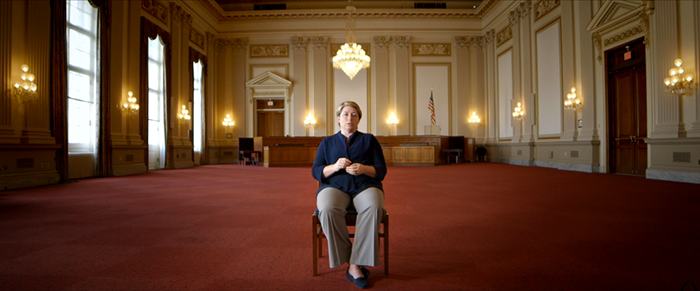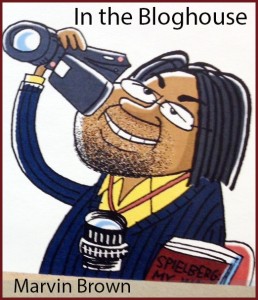DOCUMENTARY PRODUCER SEES PURPOSE IN DIRE WARNINGS

Sophie Robinson, executive producer of The Age of Consequences/PF Films
It is not your father’s global warming documentary, or even your former vice president’s. The Age of Consequences is a stark analysis of the faltering care-taking of the planet and of the resulting horrific consequences that have occurred and that lie ahead.
Director Jared P. Scott’s film positions itself outside the expected framework of liberal lecturing and scientists’ admonishments as it reaches for a broader audience by using hard-hitting visuals, unnerving data and, most critically, support from military experts. To be sure, its tone is bleak. While introducing the doc at a screening, executive producer Sophie Robinson warned viewers that they were about to see a horror film.
CHECK OUT MY REVIEW OF THE DOCUMENTARY HERE
Professionally assembled, Scott’s film doesn’t simply highlight the environmental hazards from climate change, but also examines dangers that cascade from them.
“It’s called a threat multiplier,” Robinson says. The term, used in the documentary by military officials, explains how a cluster of catastrophes—international conflicts, mass population migration, resource scarcity and even terrorism—emerge from the escalating threat of global warming.
Before she spent a year and a half producing the searing documentary for PF Films, Robinson got her start as a grassroots climate change organizer in Massachusetts. She was involved in a statewide network battling the environmental crisis. She also spent time as a science teacher.
A catalysis for her work on The Age of Consequences was another PF Films: Do the Math. That 2013 documentary, directed by Scott and Kelly Nyks, detailed the hazards of the fossil fuel industry. Its against-the-grain style got noticed, Robinson says.
“It got people excited.”
The film drew Robinson to PF Films, where she worked with Scott and his team fashion a unique take on the issue of global warming.
“We decided to make a film for people sick of seeing the same climate change films,” she says. “We wanted a ‘conversation opener.’ We asked ourselves what are some new angles?”

PF Films
A new angle was to seek a bipartisan one. Along with scientists and environmentalists, Age looks to admirals, generals and veterans to bolster its theme that environmental abuses and neglect can spiral into civil conflict, migration catastrophes, food shortages, terrorism recruitment—all while overwhelming humanitarian efforts.
Does Robinson think the matter-of-factly scary tone will be a liability for the film? She laughs. “Luckily, people don’t know how scary it is before they watch it.” It’s frightening stuff, she says, but that’s necessary to convey the seriousness of climate change.
One could think such a documentary would receive pushback in conservative circles, but interestingly the film’s strong representation of the military ruffled some feathers in liberal corners, Robinson says. “Some environmental groups thought we were too soft on the military.” But the military and security community are strong believers in the importance of taking serious climate change and its consequences. Those experts lend gravity to the film in a way a dozens of scientist cannot.
Despite its bleak presentation, the film’s ultimate aim is to encourage a positive change.
“We try to leave people with hope,” Robinson says. “There is an opportunity to change things. I actually feel lucky: I can make a difference in the outcome of our future. This is an opportunity to step up.”
The film debuted on Jan. 27.
| Marvin Brown’s Movie Review Archive

 ming?
ming?




